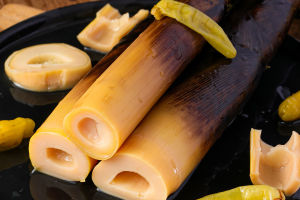In the world of tea, two vibrant and invigorating varieties have captured the hearts of tea enthusiasts worldwide: matcha and green tea.
While they may share a common origin and both hail from the Camellia sinensis plant, matcha and green tea differ in their cultivation, processing methods, flavors, and brewing techniques.
Let's dive into the captivating world of these teas and explore the subtle nuances that distinguish them.
Cultivation and Processing:
Matcha and green tea are derived from the same plant, but their cultivation and processing techniques significantly diverge.
Green tea is typically grown in direct sunlight, which encourages the leaves to develop chlorophyll, resulting in their vibrant green color.
On the other hand, matcha is cultivated in the shade, causing the leaves to produce higher levels of chlorophyll, amino acids, and antioxidants.
This shading process gives matcha its characteristic bright green hue.
Preparation and Consumption:
When it comes to preparing green tea, the leaves are steeped in hot water and then discarded. Matcha, however, is finely ground into a powder and mixed with water, allowing for the consumption of the entire leaf.
This unique preparation method enhances the flavor profile and nutrient content of matcha, making it a potent source of antioxidants and providing a sustained energy boost.
Flavor Profiles:
Green tea possesses a refreshing and grassy flavor profile, with variations ranging from delicate and vegetal to bold and robust. Matcha, on the other hand, boasts a distinctive umami flavor, accompanied by hints of sweetness and a velvety smooth texture.
Its unique taste makes matcha a popular choice for both traditional tea ceremonies and modern culinary applications.
Caffeine Content:
While both matcha and green tea contain caffeine, the brewing and consumption methods can result in different caffeine levels.
Matcha is known for providing a more sustained release of energy due to its combination of caffeine with the amino acid L-theanine.
This pairing produces a state of calm alertness, avoiding the jittery feeling often associated with other caffeinated beverages.
Health Benefits:
Both matcha and green tea are renowned for their numerous health benefits. They are rich in antioxidants, which help combat free radicals and support overall well-being.
Matcha, however, contains significantly higher concentrations of catechins, a type of antioxidant, due to its shade-growing process. This makes matcha a potent ally in promoting heart health, boosting metabolism, and fortifying the immune system.
Culinary Applications:
While green tea is primarily enjoyed as a beverage, matcha's versatility extends beyond a soothing cup of tea. Its vibrant green color and distinct flavor make it a sought-after ingredient in a wide array of culinary creations.
Matcha finds its way into desserts, such as cakes, cookies, and ice cream, as well as savory dishes, including noodles, sauces, and marinades.
The difference between matcha and green tea lies not only in their cultivation and processing but also in their flavors, brewing techniques, caffeine content, and health benefits.
Whether you prefer the grassy notes of green tea or the rich umami taste of matcha, both teas offer unique experiences and an array of potential health benefits. So, whether you are seeking a moment of tranquility or an infusion of energy, these captivating teas have you covered.


